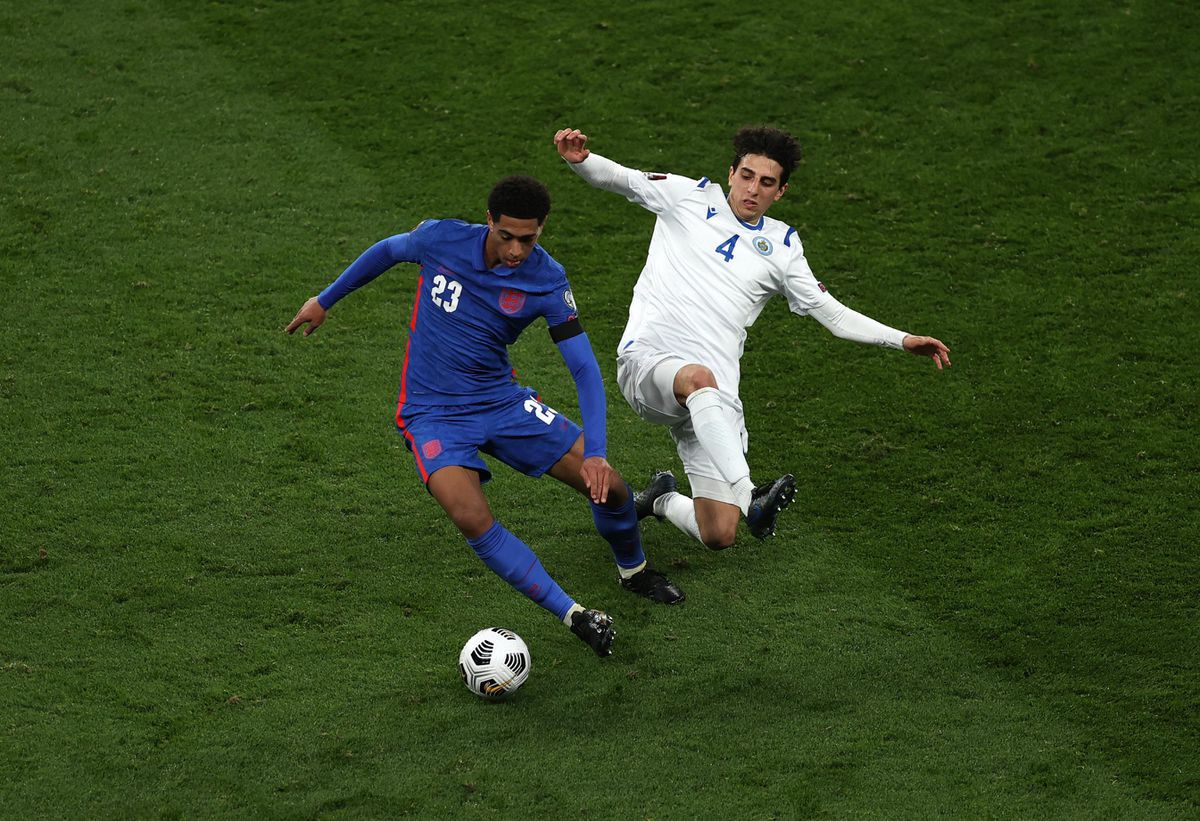[ad_1]

Jude Bellingham of England is challenged by Michael Battistini of San Marino during a FIFA World Cup … [+]
If there was ever an international break which could do without three fixtures crammed into it, the March international break is it.
UEFA nations start their Qatar 2022 World Cup qualifying campaign this March with most nations playing three World Cup qualifiers each. That’s the same amount as all the World Cup qualifiers taking place in the whole of Asia this international break. Like Asia, South America has also postponed its World Cup qualifiers in March, leading to a rather imbalanced international break.
For a few players, especially those who aren’t allowed to travel due to COVID-19 restrictions, it will be a welcome break as the most crammed soccer season ever reaches its climax. For others, the three games in this international break only add to a workload that could see them burning out by the summer.
But while a three-game international break might not be what players need right now, a change in the FIFA schedule to allow fewer, but longer international breaks could improve international soccer in the future.
Being a national team manager means making the most of every second you have with your players. With so few matches, and such a long gap between them, international managers face a much tougher task than club managers when it comes to making a coherent team that can carry out the manager’s tactics.
After Claudio Ranieri got sacked from Greece in 2014, he said he only had twelve days of training with the Greece players and didn’t have time to transmit his ideas. Most international managers last longer in their job than Ranieri did with Greece, but they all suffer from lack of time compared to club managers. By the time one group of players gets used to a tactical set-up, injuries or loss of form mean a whole host of new players need integrating into the team.

A surprise defeat to the Faroe Islands in 2014 cost Greece manager Claudio Ranieri his job. (Photo … [+]
This can lead to defensive, counter-attack based soccer, where managers focus their short time with the players on creating a solid back-line, and don’t have the time to work enough on fluid attacking play. It’s no surprise that the international team best known for short passing and possession-based soccer, the Spain team of the 2010 World Cup, was mainly built around players who played week-in week-out with each other at club level.
By giving national team managers several longer international breaks, they could be able to use their time more effectively so that the efforts made creating a cohesive team at the start of the longer break pay off by the end of it. The longer breaks would also more closely resemble the tournaments that are what national team soccer builds toward.
UEFA nations will get a four-game international break in summer 2022, which will be used for Nations League games. That will come ahead of the World Cup later that year, and will give coaches an extended period to work on tactical ideas ahead of the showpiece event.
Countries in Asia will get a four-game international break this summer to catch up on their World Cup 2022 qualifying matches, which will give a good indication of whether having a longer international break does improve performances.
Asia’s June international break, taking place while other continents play their showpiece tournaments like Euro 2020 and Copa America 2021, will have something of a tournament feel in itself. Each of the qualifying groups will play their remaining World Cup second round qualifiers in one country, reducing travel risks, but also creating what are effectively several mini-tournaments, with clubs having to deal with everything that goes with staying in a foreign environment for more than a few days.

FIFA’s head of global football development, Arsene Wenger has suggested reorganizing international … [+]
Ahead of the current international break, Arsene Wenger, in his new role of FIFA’s head of global football development, suggested changing the international calendar to include more of the big World Cup and continental championships that are the pinnacle of national team soccer. His ideas have split fans, with some excited about the proposition of more World Cup spectacles, while others saying that the idea dilutes what makes the World Cup special in the first place.
But perhaps rejigging the international calendar so teams play their qualifying matches in fewer, but longer international breaks, something that Wenger also suggested, could help recreate that tournament vibe and make non-tournament national team soccer something that fans look forward to rather than an unwanted break in the club soccer calendar.
[ad_2]
